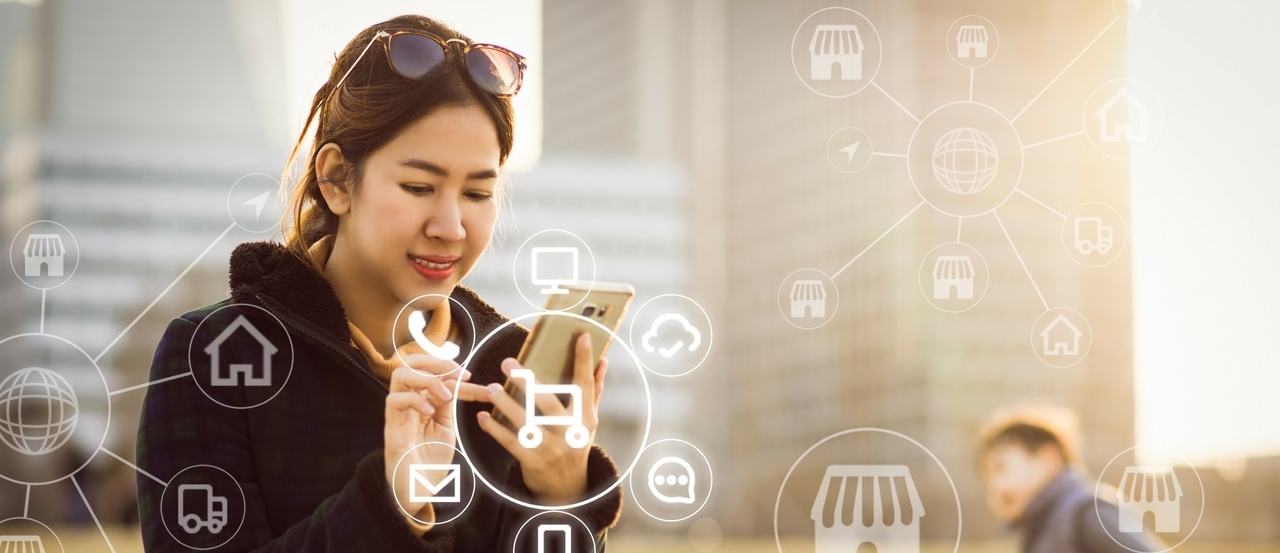- Design industry shaping loyalty programs
- Integrate easily and go live quicker
- Deliver hyper-personalized consumer experiences
Blue Rewards from Al Futtaim Group Shares Loyalty Success Stories and Evolution. Watch Podcast >
Capillary Announces 2nd Annual Captivate 2025 Summit: Transforming Loyalty Management with New AI Tech Read more >

When I visited China over a decade ago, e-commerce was still in its infancy in the retail world. Some gentleman called Jack Ma had launched Alibaba in 1999, but there was no sensation around his name as yet! Mobile phones were quite popular and the urban Chinese possessed multiple devices (remember the Nokia Communicator and the Blackberry wave?!) but smartphones were yet to be born.
Now imagine the retail scene of the world’s most populated country then. National Bureau of Statistics of China capped total retail sales of consumer goods in the country at 59.5 Billion Yuan in 2004! This was largely dominated by the Departmental Stores and Hyper Markets chains such as BHG, Dashang and Sogo.
And then came the revolution that changed the retail space of the country – e-commerce took the world by storm. ‘Early-bird’ online retailers rode on the back of disruptive technology (availability of High speed internet, introduction of smart phones and increased internet penetration), increase in disposable income and spending capacity and innovative marketing strategies to grab a slice of the lucrative retail market pie.
With the total retail sales of Consumer Goods accounting for 33.2 Trillion Yuan in 2016, convenient online shopping especially from mobile, anytime-availability, heavy discounts, convenience of making payment through third party payment service providers like Alipay and WeChat Pay (both these account for 92 percent of China’s 18.8 trillion yuan mobile payment market) and flexible return policies gave e-commerce over 17 percent of total Retail Sales as of 2017 (from a meagre 1.26 percent back in 2004) – The e-commerce sales in 2017 were hovering around 5.16 Trillion Yuan.
We can positively establish that e-commerce is here to stay and though it has slowed down from its jaw-dropping stride and beginner’s steam, experts say future of e-commerce is safe for now. Euromonitor predicts the share of online shopping to touch 24 percent by 2020 while Goldman Sachs beats their optimism to benchmark a 31 percent market share for e-com. This will mean retaining the existing ones and increasing awareness and penetration to smaller cities and rural China. Over 80 percent of China’s urban adults already shop online.
This popularity of e-commerce is fueled by smartphones (over 52 percent customers buy using their phones on a weekly basis) and increasing influence of social media (the versatile WeChat). 79 percent of the Chinese customers (versus 46 percent globally) say that positive interactions with brand on social media have driven them to endorse the brand more, and 71 percent (versus 44 percent globally) have spent more as a result*. These changing shopping preferences of Millennials (preference for personalized services as well as convenience of picking up from nearby store) and adoption of digital payments (ref. graph below), has given a boost to a phenomenon called O2O.
Emergence of O2O and the two-way push for O2O
So what is this O2O? In lay man’s words, O2O (online-to-offline) is the link between say, looking things up online and doing the actual buying in the physical, tangible world. A web definition says ‘O2O is anything digital which brings people to shop offline, in real-world stores’.
Departmental Stores, Hypermarkets adopting O2O
With growth of online retail, departmental stores and hypermarkets have taken the biggest hit. The growth in the number of new store openings of the Top 100 FMCG players fell from 5.0 percent YoY in 2014 to 4.2 percent YoY in 2015. Many undertook store revamps while others had to shut down insolvent stores. To sustain in this ‘war’ with online retail, embracing online-to-offline (O2O) strategies is a common-sense initiative adopted by smarter hypermarkets and supermarkets. These ride-with-the-tide adopters are, among other things, rolling out O2O mobile-service platforms, forming strategic alliances to drive synergies and offering O2O delivery services.
“New Retail” Regime giving boost to O2O
To continue riding this e-commerce wave, Jack Ma talks of a concept called ‘New Retail’. “Pure e-commerce will be reduced to a traditional business and replaced by the concept of New Retail―the integration of online, offline, logistics and data across a single value chain” he had said in his October 2016 letter to Alibaba’s shareholders.
In just over a year, Alibaba went from opening its first physical store to acquiring a major department store chain in the country. Their quick and smart steps aim at achieving a sizable presence before their potential competitors do. Taking the Jack Ma ‘New Retail’ model to physical retail, Alibaba is taking bold steps in expanding its retail sales capabilities and setting an example for others – and it is only time before others across the globe join the bandwagon.
With the advent of Omnichannel, Retailers are focusing on providing consistent experience across multiple channels which include Online to Offline (O2O). Key trends in O2O are seen in the graph below.
This is very much how next-generation commerce is set to look like globally, with large retailers and niche category specialists leveraging technology to provide an integrated service with the consumer at its core.
In China, early adopters like HEMA and Ule have started to provide seamless O2O experience to their customers. While HEMA flawlessly incorporates online-offline systems to offer fresh food delivery services usually within 30 minutes, Ule is targeted on the rural sector. These type of platforms are connecting offline outlets with online/mobile services with extensive logistics partners. With data-driven technology and best practices of retail and e-commerce businesses, the Ules and the HEMAs are able to transform themselves from purely offline outlets to worthy competitors in the ‘New Retail’ paradigm.
Many of Capillary customers in China are making the shift and have realized how vital a robust platform is for providing a seamless online-to-offline and offline-to-online experience to the consumer. Capillary’s Retail CRM Solutions not only help retailers create seamless and connected experiences across consumer touch-points (viz. store, brand.com, Tmall, Wechat) but also ensure personalized consumer communications powered by its AI platform.
Retail market in China is humongous and vying for a fat piece of the pie is a natural instinct of sellers. New trends, new technology and newer ways to woo, convert and retain customers has always been an inspiration for innovation. Marketers wanting to keep their heads above the water have never shied away or stood against the tide. Trends like O2O have proven that revolution is welcome with open arms when customer satisfaction and service is the aim. For now the China O2O and omnichannel story are here to stay … what next … the dragon will tell!
(*Reference: PwC’s Total Retail 2017)

January 30, 2018 | 4 Min Read
When I visited China over a decade ago, e-commerce was still

January 19, 2018 | 4 Min Read
2017 will probably go down in history as the year when the C